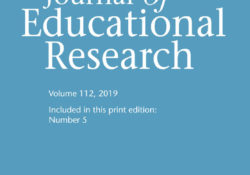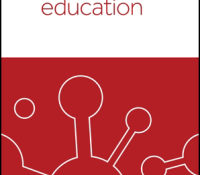tandfonline.com har udgivet en rapport under søgningen “Teacher Education Mathematics”: Abstract Abstract This study investigated upper secondary school students’ skills in evaluating the credibility and argumentative content of a blog text and a YouTube video. Both sources concerned child vaccination, the blog text opposing and the YouTube video supporting it. Students rated each source as credible, fairly credible or non-credible, justified their ratings, and analyzed the argumentation of both sources. Their justifications were analyzed for trustworthiness and expertise and their argument analyses for identification of the main position of the source and the reasons supporting it. Students’ justification skills proved fairly weak, and they also struggled with recognizing unbalanced argumentation. Students’ skill in analyzing the argumentation used in the sources also proved inadequate, especially in the blog text task. Overall… Continue Reading →
Like this:
Like Loading...

tandfonline.com har udgivet en rapport under søgningen “Teacher Education Mathematics”: Abstract Abstract One of the causes of the science teacher shortage is the low enrollment in science teacher education. In the Netherlands, science undergraduates can enroll in a half-year teaching course that leads to a teacher qualification for junior secondary education. The goal is that these undergraduates continue in teacher education to obtain a full qualification. The present study investigated how self-efficacy was related to continuing in teacher education, and to commitment, perceived workload, and stress. Moreover, we investigated how mastery experiences, vicarious experiences, social persuasions, and emotional states influenced self-efficacy. Findings based on 69 science undergraduates showed that self-efficacy was positively related to commitment and negatively to workload and stress, but unrelated to continuing in teacher education. Mastery experiences… Continue Reading →
Like this:
Like Loading...
tandfonline.com har udgivet en rapport under søgningen “Teacher Education Mathematics”: Abstract Abstract This paper explores the choice of math skills learning support by an undergraduate student cohort of Commerce and Business students at Flinders University, Adelaide, Australia. A survey methodology was used to determine the support students sought for the assumed math skills for a mandatory first-year microeconomics subject. The majority of respondents (71%; 120 of n = 169) sought support outside of class for their math skills during the semester. The major source of support was from informal networks of friends and family (62% of respondents), with 40% of respondents seeking help from only this source. University support services from the centrally provided learning center and individual tutoring at course and subject level, were used by 31.4% of respondents,… Continue Reading →
Like this:
Like Loading...
tandfonline.com har udgivet en rapport under søgningen “Teacher Education Mathematics”: Abstract Abstract In this paper, I will discuss possible sources for Priestley’s norm of correctness in his grammar book, The Rudiments of English Grammar, from a socio-historical perspective. I will show that Priestley’s norms of correctness were informed by the usage of the well-educated middle class, the language of science, Robert Lowth’s grammar and the discourse community of eighteenth-century grammarians, and a contemporary canon of good and bad usage. Link til kilde
Like this:
Like Loading...



